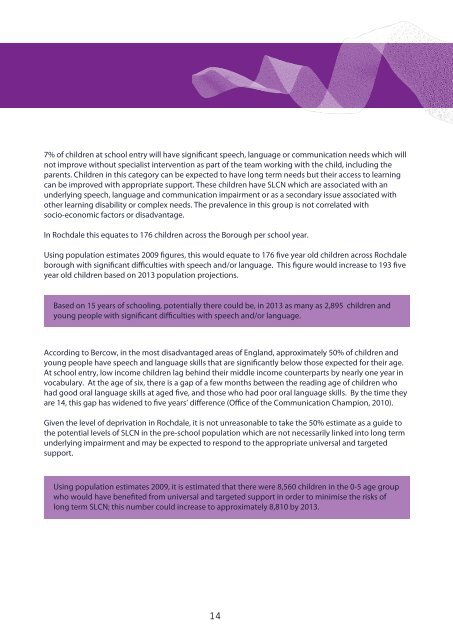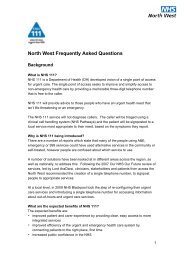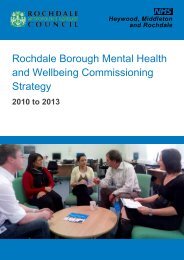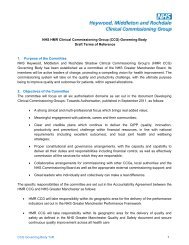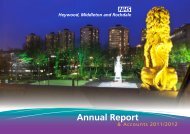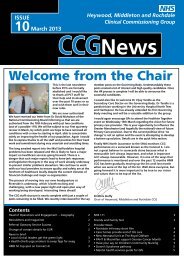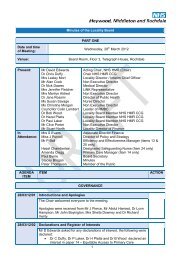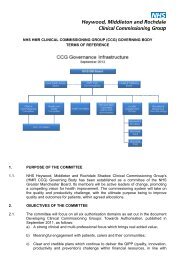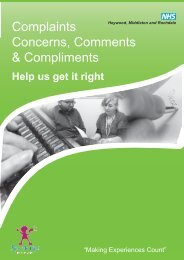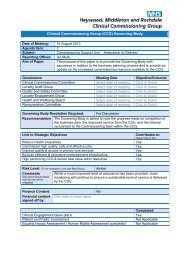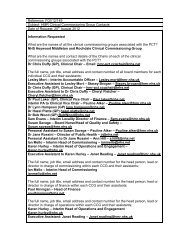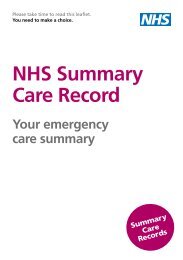Speech, Language and Communication Needs Joint ...
Speech, Language and Communication Needs Joint ...
Speech, Language and Communication Needs Joint ...
You also want an ePaper? Increase the reach of your titles
YUMPU automatically turns print PDFs into web optimized ePapers that Google loves.
7% of children at school entry will have significant speech, language or communication needs which will<br />
not improve without specialist intervention as part of the team working with the child, including the<br />
parents. Children in this category can be expected to have long term needs but their access to learning<br />
can be improved with appropriate support. These children have SLCN which are associated with an<br />
underlying speech, language <strong>and</strong> communication impairment or as a secondary issue associated with<br />
other learning disability or complex needs. The prevalence in this group is not correlated with<br />
socio-economic factors or disadvantage.<br />
In Rochdale this equates to 176 children across the Borough per school year.<br />
Using population estimates 2009 figures, this would equate to 176 five year old children across Rochdale<br />
borough with significant difficulties with speech <strong>and</strong>/or language. This figure would increase to 193 five<br />
year old children based on 2013 population projections.<br />
Based on 15 years of schooling, potentially there could be, in 2013 as many as 2,895 children <strong>and</strong><br />
young people with significant difficulties with speech <strong>and</strong>/or language.<br />
According to Bercow, in the most disadvantaged areas of Engl<strong>and</strong>, approximately 50% of children <strong>and</strong><br />
young people have speech <strong>and</strong> language skills that are significantly below those expected for their age.<br />
At school entry, low income children lag behind their middle income counterparts by nearly one year in<br />
vocabulary. At the age of six, there is a gap of a few months between the reading age of children who<br />
had good oral language skills at aged five, <strong>and</strong> those who had poor oral language skills. By the time they<br />
are 14, this gap has widened to five years’ difference (Office of the <strong>Communication</strong> Champion, 2010).<br />
Given the level of deprivation in Rochdale, it is not unreasonable to take the 50% estimate as a guide to<br />
the potential levels of SLCN in the pre-school population which are not necessarily linked into long term<br />
underlying impairment <strong>and</strong> may be expected to respond to the appropriate universal <strong>and</strong> targeted<br />
support.<br />
Using population estimates 2009, it is estimated that there were 8,560 children in the 0-5 age group<br />
who would have benefited from universal <strong>and</strong> targeted support in order to minimise the risks of<br />
long term SLCN; this number could increase to approximately 8,810 by 2013.<br />
14


